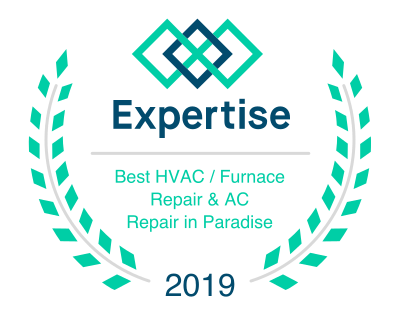A heat pump packaged unit is a type of air conditioning system that employs advanced technology to use electricity to heat and cool your home, operating much akin to air conditioners, but with a twist. It’s a dual-fuel system, a product of ingenious engineering, that can switch its fuel system based on the climate and the demands of either heating or cooling. Depending on the cycle of the year, be it summer or winter, the unit functions as an air conditioner or a heater, and the benefits of this adaptability include a more efficient response to changing temperatures. It is especially convenient as it packages different types of systems, such as a ductwork system and a gas-electric furnace, into one operation.
Heat pumps, a central component of these units, transfer heat from one location to another, positioning them perfectly as a variable heating source for your home. The heat pump in a packaged unit works by moving warm air from inside the house via the ducting to the outside or vice versa. Whether utilizing heat strip elements or leveraging refrigerant gas to move heat from one area to another, the heat pump goes beyond the functionalities of traditional air conditioners. Thus, when the outside temperatures are cold, the packaged unit can double up as a heating source, instead of just cooling your house down.
In terms of its structure, a packaged unit houses its climate control operations in one neat package, inclusive of an outdoor unit (the condenser) and an indoor component (the evaporator). With each operation cycle, when you turn on your unit during summer, the compressor starts moving refrigerant through the ductwork of the system. This refrigerant quickly transports heat from the inside of the house to the outside due to the gas-electric operations. It then passes through coils located in the outdoor component, the condenser. This is where it loses its heat energy and turns into a liquid again before getting routed back through coils located in the indoor unit, the evaporator. The evaporator is where it picks up another round of heat energy before returning to its gaseous form once again to kickstart another cycle of temperature control.
Heat pumps are not just for heating your home, they can also be used to cool down your home in the summertime! These types of systems, packing functions of air conditioners and gas furnace into one, when installed, embody the concept of a dual-fuel heat pump packaged unit. The benefits include maintaining a comfortable temperature all year round, and at the same time, keeping your utility bills at a surprisingly low rate and optimizing energy usage, making these products a preferred choice in various climates.
Under the hood, a heat pump packaged unit is a piece of equipment that combines many different devices into one piece of equipment. From components like compressors to outdoor and indoor coil, the heat pump packaged unit brings together various elements to consistently regulate your home’s climate.
What Are the Parts that Make It Up, and What Role Do They Play?
In its operation, this system uses electricity to move heat from one place to another via the ductwork, effectively maintaining the temperature balance. Whether taking in cold air and putting out hot air or vice versa, the heat pump packaged unit stands steadfast as a reliable temperature regulator.
A heat pump packaged HVAC system is made up of three main parts: the compressor, the condenser, and the evaporator. The compressor pumps refrigerant through a system of tubing to cool down the air in your home. The condenser takes this refrigerant and cools it down even further, functioning further as a preparative heating source so that it can be pumped back into your home.
Finally, the evaporator takes warm air from inside your house and pumps it through a coil, which will cool down the refrigerant coming in through the other side of that coil. The learning curve to understand this functionality may make these products seem more daunting, but the adaptability and efficiency within the cycle of operation makes such types of technology preferable.
The outdoor coil is part of the heat pump packaged system, it pulls air in from outside and passes it over refrigerant, previously pumped into the system by the compressor. Absorbing energy from the environment like a sponge, the refrigerant transfers it to the indoor coils, releasing it back into various rooms as warm air. This cycle can be altered to cool a room by reversing the refrigerant flow through the system.
The heat pump packaged unit consists of many different parts. Despite this complex marriage of technologies, each component plays an important role in providing you with comfort and energy savings, presenting a climate control package that is capable of effectively-regulating temperatures in your location.
The compressor pumps refrigerant through the system. The condenser serves as a location where the refrigerant releases heat into the air outside your home or business, effectively mirroring the operation of air conditioners, but with the added benefit of a supplementary heating source. Using these products, one can truly have a handle on their indoor climate, while simultaneously reaping the benefits of energy efficiency.This refrigerant absorbs heat from your home or business and releases it back into your space, allowing you to stay cool in summer and warm in winter. This process, similar to the way natural gas or propane heat exchangers work, maintains an optimum temperature throughout your living or working footage.
The seamless operation of a packaged heat pump unit is paramount for its efficiency. Consequently, routine checks on components such as the gas furnace, coils, and ductwork are vital to maintaining optimal performance. When the performance of your heat pump packaged unit, often discreetly tucked away in a cabinet, begins to falter that may not fit the premium image many brands try to uphold, it can trigger serious problems for your home. This includes not only a lack of warmth but also a drastic increase in energy costs reflected in your utility bills.
- An expansion: The expansion valve controls how much-refrigerated gas flows through the system.
- A filter drier: The filter drier removes moisture from the refrigerant.
- A reversing valve: This switches between heating mode and cooling mode automatically when necessary.
What Are Some Signs Something Is Wrong with Your Heat Pump Packaged Unit
Here are some telltale signs that something is wrong with your heat pump packaged unit, which utilizes heat pump technology and a complex refrigeration cycle. It would be quite helpful if troubleshooting videos for specific name brands were accessible.
A packaged heat pump unit, with its compact HVAC unit and ducts, is an ideal option for a smaller home, especially in situations where you’re aiming for an environmentally friendly and efficient approach to heat. It helps to understand the maintenance requirements to optimize the performance of your entire unit and maintain furnace performance.
- It’s making strange noises that weren’t there before; the compressor is usually the culprit for this problem.
- If you hear a loud bang coming from inside your house when it’s turned on, then it may be time to call in someone from The Cooling Company.
- A smell like burning rubber or sulfur could mean that there’s a leak somewhere in the system or that there’s something wrong with one of its components. Either way, it’s important to call an HVAC company right away so they can come out and fix it before any further damage can occur!
- If the thermostat keeps turning on and off and the temperature does not change.
- If there is an unusual noise coming from inside the unit.
- If there is water leaking around the unit or if condensation drips down from the unit onto your wall or ceiling.
- If the floor under the system feels warmer than normal for an extended period of time (over two hours).
- The outside unit isn’t running, even on a hot day. This could be caused by a blown fuse, tripped breaker, a disconnected wire, or a malfunctioning thermostat.
- The inside fan is not running when the heat pump is running. This can be caused by a blocked filter or clogged condenser coil.
- The blower motor doesn’t turn on when the thermostat demands heat. If this happens, check your thermostat and make sure it’s set to call for heat when needed (usually around 68 degrees).
What Kind of Maintenance Does a Heat Pump Packaged Unit Need?
Fortunately, adherence to regular maintenance on this type of system is relatively low-key. You don’t need to perform constant cleaning or replacement but some issues may arise that demand your attention.
Despite being designed to operate maintenance-free for years, a heat pump packaged unit does benefit from a little care. An occasional glance at your filters, possibly changing them every three months, and a keen eye on your system’s operational efficiency, measured perhaps by SEER (Seasonal Energy Efficiency Ratio), will ensure optimal performance.
- The first thing to know about is filter inspection and replacement. This should happen every season. You’ll want to check the filters in the air handler and furnace when you change the furnace filter each year. If they’re dirty, replace them! Also, check your house vents and make sure they aren’t clogged with dust or debris. This can cause problems with airflow through the unit itself and make it less energy efficient at heating your home.
- The second thing is checking for leaks around doors and windows where pipes run through them; these are usually easy fixes, like tightening up screws or using silicone caulk where needed.
A number of reasons could cause your heat pump packaged unit to falter, but thankfully, most of these troubling scenarios can be addressed by a simple repair or replacement.
How to Tell If You Need to Repair or Replace Your Heat Pump
If your heat pump packaged unit is failing to adequately heat or cool your home, it’s likely the outdoor fan isn’t functioning properly. In this case, check the fuse box to be sure nothing has blown. If the electrical system checks out, fan motor replacement may be necessary.
If you’ve already vetted the fuse and the electrical system as a whole, the problem may lie in the liquid refrigerant lines or compressor. Often susceptible to damage by rust or corrosion, these parts may need replacement.
Whether you’re a homeowner or building manager, being able to identify when your packaged heating system requires repair or replacement is critical.
How to Tell If Your Heat Pump Packaged Unit Is Working Too Hard
First, let’s delve into what could possibly be the source of the problem:
If you’re experiencing any of the following, it’s time to consult a professional:
- The outdoor temperature is too low for the unit to operate efficiently. If it’s below 45 degrees Fahrenheit, your heat pump may not be able to get enough energy from the air around it and will start drawing more power from the electrical grid than normal.
- Your home or commercial buildings may have too many windows open or leaks that allow cold air into the house. This can cause the system to work harder but produce less heat overall. This can be resolved by sealing up any leaks and keeping windows closed.
- Your indoor coil might need cleaning. If your coils are dirty and clogged with debris, they won’t work as efficiently as they should. You can clean this yourself with vinegar and water if necessary!
Whether you’re in the market for a new heat pump packaged unit or your current one needs repair, you’re not alone in this endeavour.
- Your heat pump packaged unit doesn’t make much noise at all, or it makes a loud noise.
- The air coming out of your heat pump packaged unit feels hot instead of warm.
- You’ve noticed that your home feels cooler than usual, and there’s no way to adjust the temperature on your thermostat.
Who to Call to Repair or Replace Your Heat Pump Packaged Unit
If your unit falters, it’s crucial to ensure you get the right person for the job. If you aren’t well-versed on how a heat pump packaged unit works, turn to a professional. These knowledgeable individuals can assist with the repair or replacement project while answering any questions you may have about these units.
The Cooling Company, with its long history and certified professional technicians, stands as the premier starting point when you’re in need of someone to repair or replace your heat pump packaged unit.
Focused on installing and maintaining heat pump packaged units, The Cooling company is both licensed and insured. We’ve been attending to homeowners’ needs for years, cultivating a reputation of providing quality work at affordable rates.
Committed to delivering excellent quality HVAC service, we proudly serve residents of Las Vegas and surrounding areas.
Call The Cooling Company today for all of your heat pump needs.
Call The Cooling Company today for all your heat pump needs.












